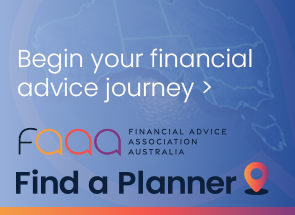Not long ago, a friend told me about the “next big thing.” It was a company he was certain would double in value within months. He couldn’t explain much about the business itself, but he was excited because “everyone” was talking about it. His plan, if you could call it that, was simple: buy now, hope it went up, and sell later at a profit.
That word – hope – comes up often when people talk about money. I hope this pays off. I hope the market recovers. I wish I had picked the right investment. Hope has a place in life. It gets us through difficult seasons and inspires us to dream about the future. But as an investment strategy, it’s a shaky foundation.
When optimism becomes risky
Human beings are wired to be hopeful. Psychologists point out that optimism is linked to resilience—it helps us persist when things get tough. But optimism in the wrong context can cloud judgment. When it comes to investing, hope often replaces research, discipline, or strategy.
We convince ourselves that something is worth doing simply because it feels exciting or popular. That’s how bubbles form. We saw it in the dot-com frenzy, in the property booms, in the crypto surges of the last decade. Each time, people piled in with the same underlying thought: I hope this goes higher.
The trouble is hope doesn’t protect you when the cycle turns.
Pretend investing
There’s a term I like to use: “pretend investing.” It’s what happens when people believe they’re being rational investors but are really just speculating. Instead of building a portfolio aligned with long-term goals, they chase the latest tip or trend. They follow what’s popular in the moment and tell themselves it’s a plan.
But it’s not a plan. It’s betting with a different name.
Our own psychology reinforces this behaviour.
- Fear of missing out makes us want to copy what others are doing.
- Confirmation bias leads us to hunt for information that supports our hunches while ignoring evidence to the contrary.
- And if we’ve had one or two lucky wins, overconfidence convinces us we can repeat the trick.
Each of these biases feeds the habit of relying on hope instead of discipline.
How to tell If you’re hoping, not investing
It’s not always easy to spot when hope has crept into your decision-making. A few questions can help:
- If this investment dropped in value tomorrow, would I still want to own it?
- Can I explain how it fits into my broader financial goals?
- Do I have an apparent reason for buying beyond “I hope it goes up”?
If the honest answers make you uncomfortable, it might be a sign you’re leaning on hope rather than strategy.
Replacing hope with confidence
What’s the alternative? Confidence. Not the overconfidence of believing you can predict every market move, but the quiet confidence that comes from having a plan.
A real investment plan doesn’t start with a product or a trend. It begins with you: your goals, your time horizon, your risk tolerance. From there, you can put together a process: the mix of assets, the approach to diversification, the discipline to review and adjust without being thrown off course by every headline. Only after that do you choose the specific investments, the products that serve the bigger picture.
It’s not glamorous, but it works. Unlike hope, it provides a solid foundation to rely on when markets become volatile.
The hard part: patience
Of course, even with a plan, investing still requires patience. That might be the hardest part. Our brains crave excitement and quick results. We’re drawn to stories of people striking it rich overnight, even if we know deep down those stories are rare exceptions.
But lasting wealth is usually built slowly. Compounding takes time. Recoveries don’t announce themselves ahead of schedule. The discipline to wait – to stay invested when the market dips, to resist the urge to tinker endlessly – is what separates genuine investors from hopeful speculators.
A better kind of hope
None of this means hope has no role in our financial lives. It’s good to hope for the future – to imagine the kind of life you want, the freedom you’d like to enjoy, the security you’d like for your family. That kind of hope gives direction.
But once you’ve pictured that future, the next step is to turn hope into a plan. A plan turns dreams into decisions. A plan gives you the confidence to act with clarity, instead of waiting for luck or the crowd to carry you forward.
So, the next time you catch yourself thinking I hope this works out, pause for a moment. Ask whether you’re truly investing – or just hoping. Because while hope can spark the vision, it’s discipline and strategy that carry you to the finish line.
Meet Thabojan at Rasiah Private Wealth Management or Find a Planner near you!
The Money & Life website is operated by the Financial Advice Association Australia (FAAA). The views expressed in this article are those of the author and not those of the FAAA. The FAAA does not endorse or otherwise assume responsibility for any financial product advice which may be contained in the article. Nor does it endorse or assume responsibility for the information.








